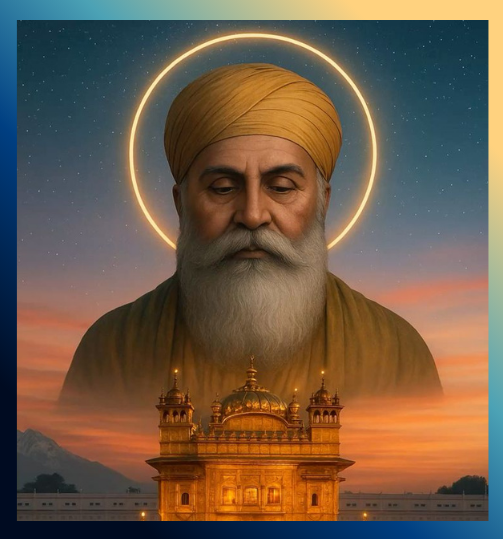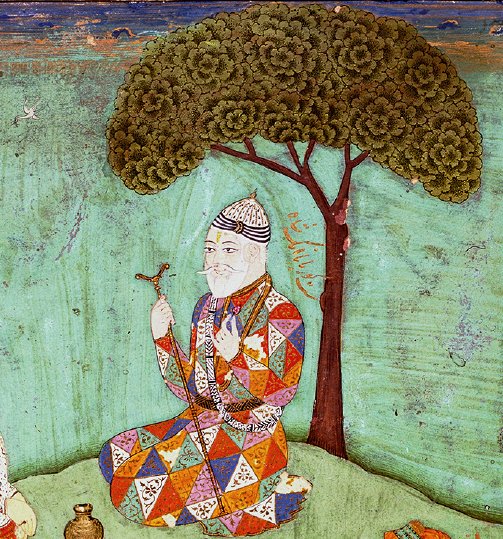Guru Nanak Dev Ji

Guru Nanak (1469–1539): Life, Teachings & Legacy
Guru Nanak Dev Ji (15 April 1469 – 22 September 1539), also known as Baba Nanak, was an Indian spiritual teacher, poet, and mystic. He is the founder of Sikhism and the first of the ten Sikh Gurus. His teachings, emphasizing the oneness of God (Ik Onkar), equality, and devotion, laid the foundation for the Sikh religion.
He preached that God resides in every being and that all human beings are equal, regardless of caste, creed, or gender. Nanak’s vision established a new social, spiritual, and political platform based on equality, love, honesty, and service.
His message is preserved in 974 hymns found in the Guru Granth Sahib, the central religious scripture of Sikhism. Major hymns include Japji Sahib, Asa di Var, and Sidh Gosht. Sikhs believe that the spirit of Guru Nanak continued in the nine Gurus who succeeded him.
Birth and Early Life
Guru Nanak was born on 15 April 1469 in Rai Bhoi di Talwandi (now Nankana Sahib, Punjab, Pakistan), then part of the Delhi Sultanate. He was born into a Khatri Hindu family; his father, Mehta Kalu, was a revenue official, and his mother was Mata Tripta. His family belonged to the Bedi sub-caste of Khatris.
From childhood, Nanak displayed spiritual inclination. At age five, he showed interest in divine matters, and at seven, he began formal schooling, where he astonished his teacher with a deep understanding of the concept of oneness. Legends from his childhood speak of miraculous signs, such as a cobra shading his face while he slept or the shadow of a tree protecting him from the sun.
His sister Bibi Nanaki was a strong spiritual influence. She married and moved to Sultanpur, where her husband, Jai Ram, helped Guru Nanak secure a job in the modikhana (storehouse) of the local governor. Nanak moved there around the age of 16.
Marriage and Family
At the age of 18, Guru Nanak married Sulakhani, daughter of Mula Chand and Chando Rani, in Batala on 24 September 1487. The couple had two sons: Sri Chand and Lakhmi Das. Guru Nanak continued living in Sultanpur for several years, where he deepened his spiritual understanding.
Spiritual Awakening and Travels
In 1496, Guru Nanak experienced a profound spiritual awakening. He declared, “There is no Hindu, there is no Muslim”, emphasizing the unity of all faiths under one God. After this realization, he undertook extensive udasis (spiritual journeys), covering vast parts of India, Tibet, the Middle East, and Arabia. His mission was to spread the message of truth, justice, and devotion to one God.
Through debates, discussions, and poetic hymns, Guru Nanak challenged ritualism, casteism, and religious hypocrisy, and encouraged compassion, humility, and honest living.
Controversy Around Birth Date
While historical records confirm Guru Nanak’s birth in April 1469, many Sikhs celebrate his birthday in November, on the full moon day (Purnima) of the Kattak month. Early biographies (Janamsakhis) vary on the date. The Bala Janamsakhi—though of disputed authenticity—supports the October/November birth.
This change in observance may have been influenced by religious festivals and practical reasons, including better public attendance and increased donations after harvest season. Prominent Sikh historians and texts such as the Bhatt Vahis, Meham Parkash, and Gurbilas Patashahi 6 support the Kattak date as well.
Final Years in Kartarpur
In his later years, Guru Nanak settled in Kartar Pur (in present-day Narowal, Pakistan), a town he founded on the banks of the Ravi River. Here, he practiced what he preached: a life of meditation, work (kirat karni), and sharing (vand chakna). His community became known as Kartaris.
He appointed Bhai Lehna as his successor, giving him the name Guru Angad, meaning “a part of myself.” This marked the beginning of the Guru lineage in Sikhism.
Guru Nanak passed away on 22 September 1539. Sikh hagiography recounts that after his death, Hindus and Muslims argued over his last rites. When they lifted the cloth covering his body, they found only flowers, which they divided and cremated/buried according to their customs. This symbolized his message of unity and oneness beyond religious boundaries.
Legacy
Guru Nanak’s teachings continue to guide millions around the world. His life inspired the formation of a faith grounded in devotion to one God, equality for all, community service, and righteous living. His legacy remains immortal through the Guru Granth Sahib, Sikh institutions like the Gurdwara, and the global celebration of Guru Nanak Gurpurab.

